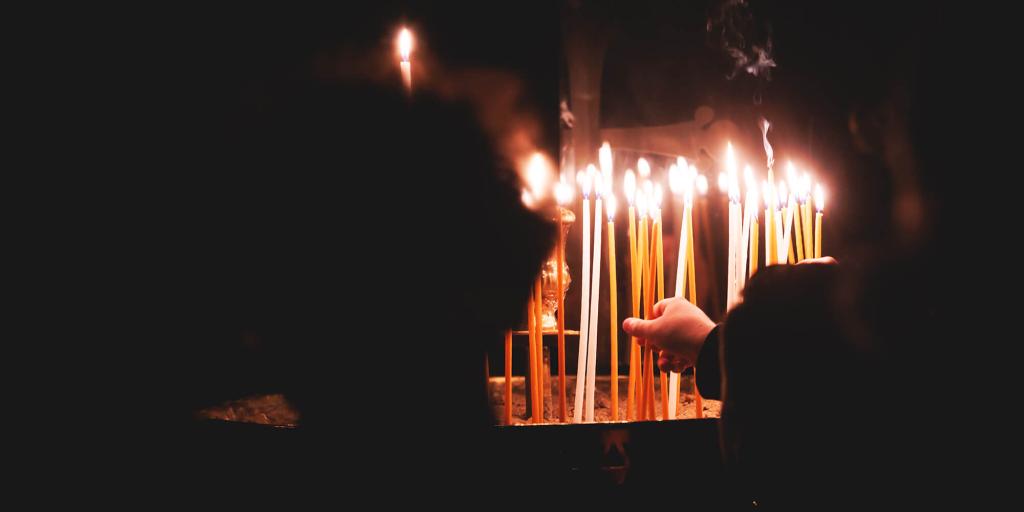
Catholic and Orthodox Churches Reuniting on Easter Date?
Tomorrow’s World watches ecumenical developments in Christendom and has done so for decades. What is ecumenism? Encyclopedia Britannica defines ecumenism in Christianity as a “movement or tendency toward worldwide Christian unity or cooperation,” further stating that “the term, of recent origin, emphasizes what is viewed as the universality of the Christian faith and unity among churches.” Many denominations and their leaders desire to “come back together” in some way. This desire includes the three major branches of mainstream Christianity: Catholics, Protestants, and Eastern Orthodox. Recent ecumenical conversations have taken place between leaders of the Catholic and Eastern Orthodox churches regarding agreeing on a shared date for Easter.
Easter is a widely-known and widely-practiced religious holiday, professed to be a most sacred Christian observance but with obvious ties to pagan ideas. And why should that be so? In the century following Jesus’ lifetime, unbiblical and pagan traditions and doctrines crept into the true faith, including the celebration of Easter. Without any biblical guidance, churches were keeping Easter on different dates, leading Roman Emperor Constantine to call the Council of Nicaea in 325 AD, with one of its primary goals to settle one date on which to celebrate Easter.
The Great Schism (or “East-West Schism”) occurred a little more than 700 years later in 1054 AD, which created Western and Eastern Christianity (or Roman Catholic and Eastern Orthodox, respectively). Today, there are about 1.3 billion Catholics and 300 million Orthodox.
Interestingly, the official name of Eastern Orthodox is “Orthodox Catholic Church.” Part of the Great Schism included the western Pope and the eastern Patriarch of the time excommunicating one another, which lasted until those excommunications were canceled in 1964. Some calendar differences grew over time and led the two branches of Christendom to keep Easter on different dates, especially since the Catholic Church adopted the Gregorian Calendar in 1582.
This year, the Catholic date for Easter is March 31, while the Orthodox date is May 5.
Catholic News Agency published an article in November, 2022, entitled “Why Catholics and Orthodox Might Once Again Celebrate Easter on the Same Date.” The article stated, “In a move that could lead to Catholics and Orthodox celebrating the Resurrection of Jesus Christ at the same time, the spiritual leader of the world’s Eastern Orthodox Christians has confirmed his support for finding a common date to celebrate Easter. Ecumenical Patriarch Bartholomew of Constantinople told media that conversations are underway between Church representatives to come to an agreement, Zenit reported this week. According to an earlier report by Vatican News, the patriarch supports such a common date to be set for the year 2025, which will mark the 1,700th anniversary of the First Ecumenical Council of Nicea.”
This could be an important step within a broader ecumenical movement that has been taking place in recent decades and could signal the advancement of important end-time prophecies.
Revelation 17:3–5 states, “So he carried me away in the Spirit into the wilderness. And I saw a woman sitting on a scarlet beast which was full of names of blasphemy, having seven heads and ten horns. The woman was arrayed in purple and scarlet, and adorned with gold and precious stones and pearls, having in her hand a golden cup full of abominations and the filthiness of her fornication. And on her forehead a name was written: MYSTERY, BABYLON THE GREAT, THE MOTHER OF HARLOTS AND OF THE ABOMINATIONS OF THE EARTH.” When this passage is paired with Isaiah 47:1–11, Revelation 6, 13, and 18, a picture comes together of the end-time False Prophet unifying a powerful, deceptive, and militant church that poses as Christian.
Dr. Douglas Winnail wrote about the ecumenical movement in a 2014 Tomorrow’s World article entitled “The Ecumenical Delusion”: “The ecumenical movement we are witnessing today will culminate with the appearance of these two prominent figures [the beast and false prophet] who will delude the world into following their satanic teachings—and this will occur just before the return of Jesus Christ.”
The desire of Pope Francis and Ecumenical Patriarch Bartholomew to come back together on the date of Easter, their denominations’ most sacred holiday, will be interesting to watch as 2025 nears—the 1,700-year anniversary of the Council of Nicaea, when the date of Easter was first established.
Even if it happens in 2025, it likely wouldn’t be the “final piece” of prophecy, but it is just another event that clearly shows the desire of major Christian leaders and their denominations to reunite, which aligns with end-time prophecies.
If you would like to study this topic in more detail, consider ordering our free booklet Who or What is the Antichrist?
Stay up to date with our Weekly Digest Email!
Tomorrow's World ComMentary Podcast
Subscribe to Tomorrow's World Commentary podcasts on iTunes and Google Play!



